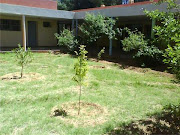What is Culture?
Culture is defined as the shared patterns of behaviors and interactions, cognitive constructs, and affective understanding that are learned through a process of socialization. These shared patterns identify the members of a culture group while also distinguishing those of another group.
Other Definitions of Culture
Banks, J.A., Banks, & McGee, C. A. (1989). Multicultural education. Needham Heights, MA: Allyn & Bacon. "Most social scientists today view culture as consisting primarily of the symbolic, ideational, and intangible aspects of human societies. The essence of a culture is not its artifacts, tools, or other tangible cultural elements but how the members of the group interpret, use, and perceive them. It is the values, symbols, interpretations, and perspectives that distinguish one people from another in modernized societies; it is not material objects and other tangible aspects of human societies. People within a culture usually interpret the meaning of symbols, artifacts, and behaviors in the same or in similar ways." Damen, L. (1987). Culture Learning: The Fifth Dimension on the Language Classroom. Reading, MA: Addison-Wesley. "Culture: learned and shared human patterns or models for living; day- to-day living patterns. these patterns and models pervade all aspects of human social interaction. Culture is mankind's primary adaptive mechanism" (p. 367). Hofstede, G. (1984). National cultures and corporate cultures. In L.A. Samovar & R.E. Porter (Eds.), Communication Between Cultures. Belmont, CA: Wadsworth. "Culture is the collective programming of the mind which distinguishes the members of one category of people from another." (p. 51). Kluckhohn, C., & Kelly, W.H. (1945). The concept of culture. In R. Linton (Ed.). The Science of Man in the World Culture. New York. (pp. 78-105). "By culture we mean all those historically created designs for living, explicit and implicit, rational, irrational, and nonrational, which exist at any given time as potential guides for the behavior of men." Kroeber, A.L., & Kluckhohn, C. (1952). Culture: A critical review of concepts and definitions. Harvard University Peabody Museum of American Archeology and Ethnology Papers 47. " Culture consists of patterns, explicit and implicit, of and for behavior acquired and transmitted by symbols, constituting the distinctive achievements of human groups, including their embodiments in artifacts; the essential core of culture consists of traditional (i.e. historically derived and selected) ideas and especially their attached values; culture systems may, on the one hand, be considered as products of action, and on the other as conditioning elements of further action." Lederach, J.P. (1995). Preparing for peace: Conflict transformation across cultures. Syracuse, NY: Syracuse University Press. "Culture is the shared knowledge and schemes created by a set of people for perceiving, interpreting, expressing, and responding to the social realities around them" (p. 9). Linton, R. (1945). The Cultural Background of Personality. New York. "A culture is a configuration of learned behaviors and results of behavior whose component elements are shared and transmitted by the members of a particular society" (p. 32). Parson, T. (1949). Essays in Sociological Theory. Glencoe. "Culture...consists in those patterns relative to behavior and the products of human action which may be inherited, that is, passed on from generation to generation independently of the biological genes" (p. 8). Useem, J., & Useem, R. . Human Organizations, 22(3). "Culture has been defined in a number of ways, but most simply, as the learned and shared behavior of a community of interacting human beings" (p. 169). | .jpg)
.jpg)

.jpg)
.jpg)





